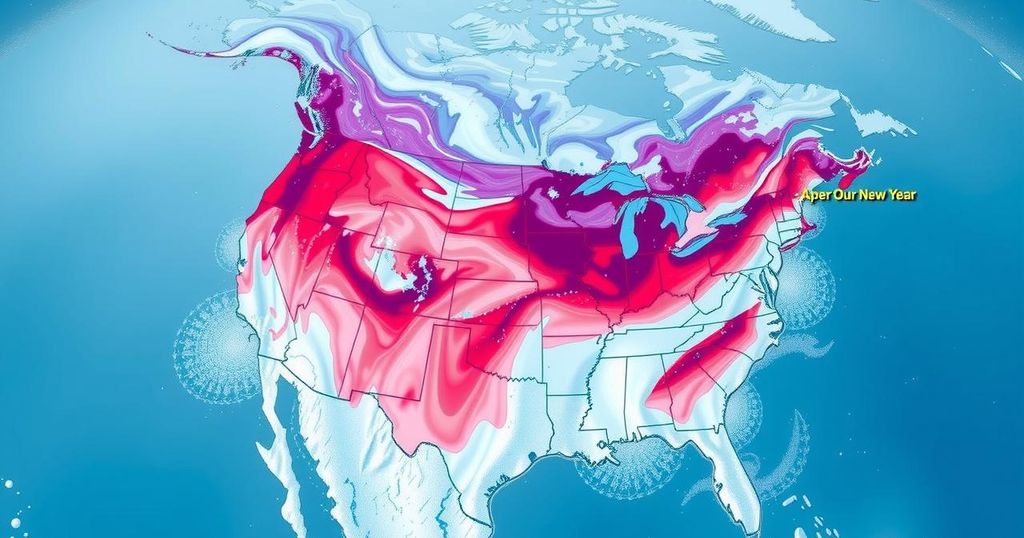Arctic Outbreak Brings Frigid Temperatures to North America

The New Year brings an Arctic outbreak across North America, leading to significantly colder temperatures in Eastern Canada and the U.S., with forecasts of lows below -17 degrees Celsius in major cities. The conditions are a result of frigid air masses moving southward from Siberia, raising concerns over public safety and extreme weather impacts.
As the New Year commences, an Arctic outbreak is sweeping across North America, significantly lowering temperatures in Eastern Canada and parts of the United States. This phenomenon, often referred to as an “Arctic blast” in the U.S., is a result of frigid air masses originating from Siberia, traveling across the North Pole and penetrating deeply into the southern U.S. states, including Florida. Wilson, a meteorologist from Environment Canada, notes that Kitikmeot communities are hit particularly hard, with current temperatures plunging below -30 degrees Celsius and wind chills reaching dangerously low levels of -50 degrees Celsius.
Iqaluit, once experiencing relatively mild conditions, is expected to see temperatures drop to -17 degrees Celsius by January 8. Similarly, Eastern Canada is witnessing a notable decline in temperatures, with highs decreasing from -1 degrees Celsius on January 2 to a chilling -11 degrees Celsius by January 5. Although these temperatures may not be extreme for the region, they are a significant shift from previous patterns.
In the Eastern United States, this outbreak is anticipated to yield exceptionally low temperatures. Philadelphia is expected to record lows below -17 degrees Celsius—an unprecedented occurrence this century—while Washington, D.C. will experience its first comparable dip since 2019. Fortunately, meteorologist Proctor anticipates a warming trend to develop by the end of the following week.
While Arctic outbreaks are typical during this season and have a relatively high frequency, it is critical to note the severe consequences associated with past events. The severe outbreak in January 2019 resulted in over 20 fatalities across the U.S. and widespread disruptions including canceled flights due to temperatures plunging below -49 degrees Celsius. This year’s Arctic cold presents a wake-up call to prepare for similar dangers as we enter the heart of winter.
The phenomenon known as an Arctic outbreak occurs when cold air masses from the Arctic region migrate southward, leading to significantly lower temperatures across North America. The current outbreak is notably affected by air originating from Siberia, which has traveled across the North Pole to impact various regions in Canada and the United States. Such outbreaks are common during winter, yet extreme weather events can pose serious risks to health and safety, as evidenced by past instances where severe cold conditions resulted in loss of life and disrupted transportation systems.
In summary, the onset of the New Year has ushered in an Arctic outbreak that is causing substantial temperature drops across Eastern Canada and the U.S. The effects of this cold air mass, especially in areas such as Philadelphia and Washington, D.C., underscore the severity of winter conditions this season. As temperatures are expected to begin rising later in the week, the risks associated with extreme cold must remain a focus for residents and authorities in affected regions.
Original Source: nunatsiaq.com






